Steve Li
YOLO-Stutter: End-to-end Region-Wise Speech Dysfluency Detection
Sep 09, 2024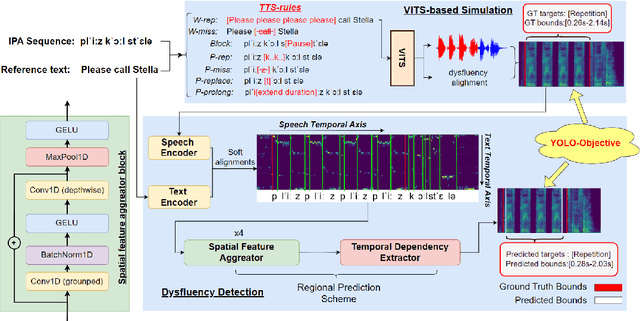
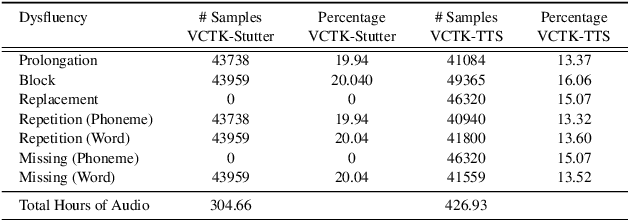
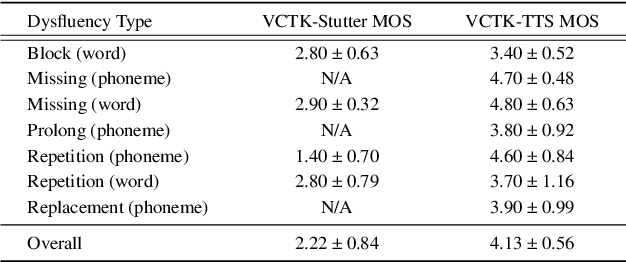

Abstract:Dysfluent speech detection is the bottleneck for disordered speech analysis and spoken language learning. Current state-of-the-art models are governed by rule-based systems which lack efficiency and robustness, and are sensitive to template design. In this paper, we propose YOLO-Stutter: a first end-to-end method that detects dysfluencies in a time-accurate manner. YOLO-Stutter takes imperfect speech-text alignment as input, followed by a spatial feature aggregator, and a temporal dependency extractor to perform region-wise boundary and class predictions. We also introduce two dysfluency corpus, VCTK-Stutter and VCTK-TTS, that simulate natural spoken dysfluencies including repetition, block, missing, replacement, and prolongation. Our end-to-end method achieves state-of-the-art performance with a minimum number of trainable parameters for on both simulated data and real aphasia speech. Code and datasets are open-sourced at https://github.com/rorizzz/YOLO-Stutter
Unconstrained Dysfluency Modeling for Dysfluent Speech Transcription and Detection
Dec 20, 2023Abstract:Dysfluent speech modeling requires time-accurate and silence-aware transcription at both the word-level and phonetic-level. However, current research in dysfluency modeling primarily focuses on either transcription or detection, and the performance of each aspect remains limited. In this work, we present an unconstrained dysfluency modeling (UDM) approach that addresses both transcription and detection in an automatic and hierarchical manner. UDM eliminates the need for extensive manual annotation by providing a comprehensive solution. Furthermore, we introduce a simulated dysfluent dataset called VCTK++ to enhance the capabilities of UDM in phonetic transcription. Our experimental results demonstrate the effectiveness and robustness of our proposed methods in both transcription and detection tasks.
Goal Driven Discovery of Distributional Differences via Language Descriptions
Feb 28, 2023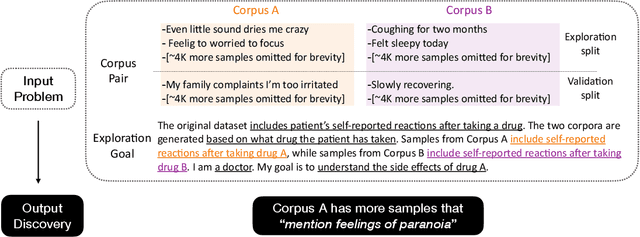
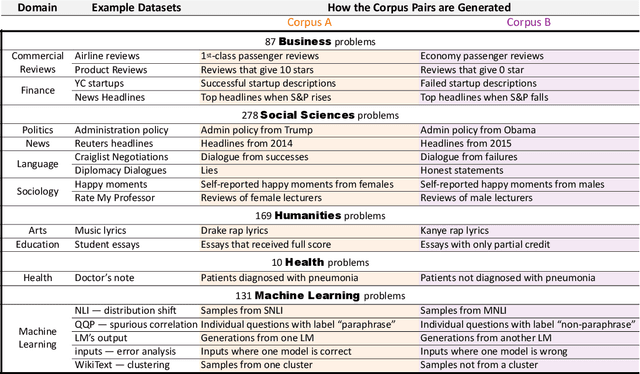
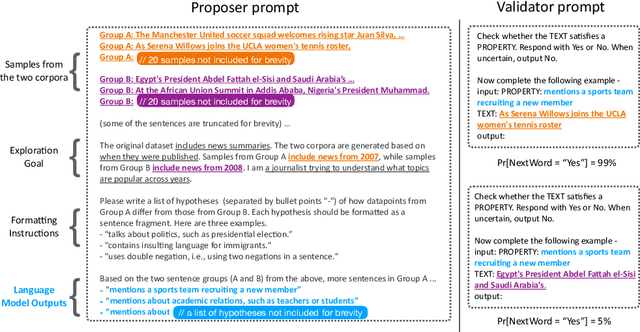

Abstract:Mining large corpora can generate useful discoveries but is time-consuming for humans. We formulate a new task, D5, that automatically discovers differences between two large corpora in a goal-driven way. The task input is a problem comprising a research goal "$\textit{comparing the side effects of drug A and drug B}$" and a corpus pair (two large collections of patients' self-reported reactions after taking each drug). The output is a language description (discovery) of how these corpora differ (patients taking drug A "$\textit{mention feelings of paranoia}$" more often). We build a D5 system, and to quantitatively measure its performance, we 1) contribute a meta-dataset, OpenD5, aggregating 675 open-ended problems ranging across business, social sciences, humanities, machine learning, and health, and 2) propose a set of unified evaluation metrics: validity, relevance, novelty, and significance. With the dataset and the unified metrics, we confirm that language models can use the goals to propose more relevant, novel, and significant candidate discoveries. Finally, our system produces discoveries previously unknown to the authors on a wide range of applications in OpenD5, including temporal and demographic differences in discussion topics, political stances and stereotypes in speech, insights in commercial reviews, and error patterns in NLP models.
The Naughtyformer: A Transformer Understands Offensive Humor
Nov 25, 2022
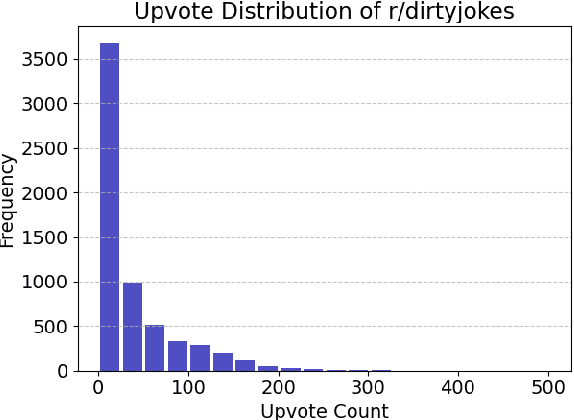


Abstract:Jokes are intentionally written to be funny, but not all jokes are created the same. Some jokes may be fit for a classroom of kindergarteners, but others are best reserved for a more mature audience. While recent work has shown impressive results on humor detection in text, here we instead investigate the more nuanced task of detecting humor subtypes, especially of the less innocent variety. To that end, we introduce a novel jokes dataset filtered from Reddit and solve the subtype classification task using a finetuned Transformer dubbed the Naughtyformer. Moreover, we show that our model is significantly better at detecting offensiveness in jokes compared to state-of-the-art methods.
 Add to Chrome
Add to Chrome Add to Firefox
Add to Firefox Add to Edge
Add to Edge